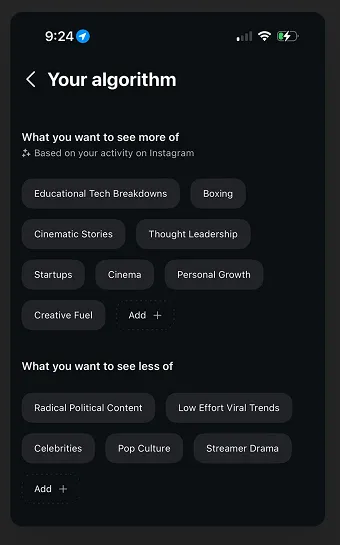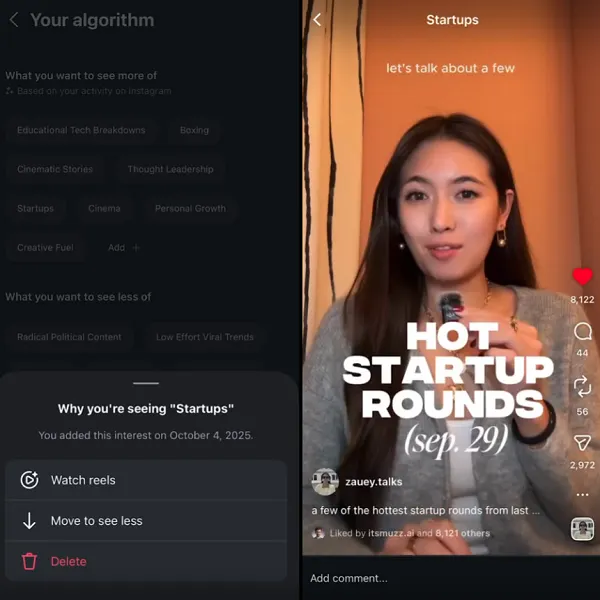Instagram Experiments with User-Controlled Algorithm
 Adshine.pro10/10/20255 views
Adshine.pro10/10/20255 viewsInstagram is rolling out a new feature designed to give users more direct control over the Reels content they see—essentially letting people manually steer the app’s recommendation engine. The update introduces an algorithm overview that highlights the topics Instagram believes you’re interested in, and allows you to edit those preferences by adding or removing topic groups.
The new algorithm control option, first announced last month, is now being made available to select users.

As shown in the example shared by Roberto P. Nickson, users can find this feature in a new “Your Algorithm” section within their Reels settings, accessible via the Reels feed menu. From there, Instagram will display a simplified overview of the categories it assumes you like—organized by broad topic groups. You can remove any that feel irrelevant, or add new ones to fine-tune your feed.
Even more usefully, when you tap into a topic, you’ll get a list of management options along with visual examples of the Reels that fall under that category.

This additional context helps users decide whether a topic truly aligns with their interests or not. It’s a surprisingly thoughtful approach—arguably one of the most user-friendly algorithm customization systems any major platform has implemented. It addresses growing concerns over how algorithmic feeds are shaping user experiences, particularly with Meta’s increasing reliance on AI-driven recommendations.
But here’s the catch: will people actually use it?
Meta has a history of introducing “control” features like this, largely as a form of reputational armor. By offering these settings, the company can point to them as evidence that users can curate their experience—if they truly want to.
It’s a smart move, and a risky one. Meta knows its AI recommendations are central to engagement growth across its apps. Yet, it also knows that most people rarely take advantage of these kinds of controls.
We’ve seen this pattern before. From privacy and data-sharing settings to feed preferences and security options, the vast majority of users never bother to change the defaults. They like knowing they have the option—it provides a sense of control—but that’s where it usually stops.
Take the fallout from the Cambridge Analytica scandal, for example. After Facebook faced global backlash for allowing user data to be exploited for political targeting, the company introduced sweeping new data control options. You’d expect people to rush to lock down their profiles, right?
As Facebook’s then–VP of Global Marketing, Carolyn Everson, admitted at the time:
“We’ve not seen wild changes in behavior with people saying I’m not going to share any data with Facebook anymore.”
And that’s the story across the industry. Studies consistently show that most social media users never adjust their privacy settings. Even parents—those who publicly voice the loudest concern over app safety—rarely use available parental control tools, according to a Washington Post investigation last year.
It’s a recurring paradox: users demand more control, but rarely exercise it.
Meta knows this dynamic well. It’s why the company is reluctant to make certain user-preferred options—like a fully chronological feed—into a default setting. Offering the appearance of control is usually enough to quiet criticism, while maintaining the engagement benefits of algorithmic curation.
So while Instagram’s new Reels algorithm editor is a welcome addition in theory, it’s unlikely to see mass adoption in practice. Meta will tout it as a transparency win, while continuing to let its AI systems run the show.
At least now, users can’t say they didn’t have a choice.
📢 If you're interested in Facebook Ads Account, don't hesitate to connect with us!
🔹 https://linktr.ee/Adshinepro
💬 We're always ready to assist you!